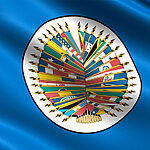Rights, powers and duties of staff associations
1. Introduction
An important part of International Organisations and their functioning is the existence and operation of an association of staff. Like in the private sector, associations of staff play an important role in the balance of interests of international civil servants employed in the international public sector. In fact, Staff Associations, Staff Unions and Staff Councils (referred to as ‘SAs’ below), depending on their composition, set up and internal structure, mediate between staff and management, preserve the staff interests (from both the economical and welfare perspective) and help in the mediation or resolution of internal employment disputes.
2. Definition, Constitution and Comparison
There are many definitions of associations of staff and, depending on their set up, such organisations can be defined as Staff Associations, Committees, Councils or Unions. Is there a difference? In some cases it is simply a semantic difference but in many other cases there is a difference in terms of statute, composition and structure. For example, the UN Staff Union in Vienna provides for membership on a personal basis and the structure is pyramidal: the Union is further composed by the Staff Council (on elective basis – members and alternates are representatives of different UN offices and department in Vienna) and the Staff Committee (the “management” of the Staff Union) is composed of the President, Vice-president, Treasurer, Secretary and Rapporteur. The common denominator is that all these entities represent staff interests with respect to the organisation’s management and, on a higher level, contribute to defending staff rights in the complex context of international employment law.
In most SAs the staff working for the SA itself are regular staff of the organisation, therefore staff members involved in the functioning of the SA do have a regular job to perform, along with their duties as staff representatives. In these cases, the organisation guarantees a number of working hours to be devoted to the staff association activities. However, the duality of roles and the consequent difficulties in combining regular duties with SA duties is mostly evident in the roles at the top of the SA management: the chair or president and its vice. The preferable scenario would be that of a president who is a full-time employee in the interest of staff, namely without a parallel regular job within the organisation. This ensures the full independence of the SA governing body and due attention to the issues of staff. This is the case in large international organisations or financial institutions such as that of the World Bank Group (WBG); due to their high number of staff it would be impossible for the SA staff to perform two roles within the organisation and the SA. These SAs are generally well structured and offer also legal counseling tailored for their staff (e.g. WBG, similarly, the European Bank for Reconstruction and Development – EBRD). However, the fact that the Chair of the SA is recruited by the Organisation to perform its SA role only might be seen as a conflict of interest whereby the staff member is paid by the organisation to pick up battles against the organisation itself.
In many other smaller international organisations there are some hybrid structures in which the chair or its deputy do have part-time agreement with the organisation, hence they can dedicate a sufficient amount of time to the SA issue. However, most international organisations do not have dedicated staff only for SA issues. Therefore, notwithstanding special agreements regarding the hours of work to be dedicated to SA matters, the management of the SA is time consuming and is often put aside to the detriment of the staff interests. Conversely, in many other cases, the staff representatives take their duties very seriously, sometime to the detriment of their regular job, which can result in an uncomfortable situation to handle.
3. Elections, committees and funding
The mechanism in place to establish the SAs’ government is mostly elective, either directly from staff, who elect their representatives through direct vote or through lists of available candidates presented by committees or by the departments or sections of the organisation. This does not apply to the cases in which the SA Chair (and its supporting staff) is recruited directly by the organisation; the Chair will then select its collaborators. The SAs of the larger international organisations are often structured in various committees which deal with the main areas of interest for staff, like, for example, pensions, entitlements, healthcare, disability, including also financial and human resources related matters.
Regarding the funding of the SAs, there are various type of possible funding: some SAs receive contributions directly as a percentage of the staff salary, although the contribution to the SA is not mandatory but certainly advisable; by way of example at the International Development Bank (IDB) the SA receives contributions as a percentage if its members’ salaries, however the members have the opportunity to opt out. In other cases, such as at the EBRD, the SA receives a grant from the organisation, which also pays for a secretary and office expenses. A different and rather unique system is in place at the UN headquarter whereby the Office of Staff Legal Affairs (OSLA) is entirely funded by the UN. OSLA has dedicated legal staff dealing exclusively with legal issues affecting the organisation’s members and providing them with legal advice and representation.
4. Staff Associations’ relationships with staff and management
The SA can help staff in various manners. Certainly, in case of employment disputes, the SA’s basic modus operandi is that of providing the staff member concerned with the initial steps such as preliminary advice on employment difficulties, disciplinary aspects involved, advice on harassment issues and general grievances, general support and possible funding of a case. After that, and after exhausting the internal remedies available within each organisation (including very often a supportive role during mediation), if the case is meritorious and the SA will support and/or fund it, depending on the Statutes and Rules of Procedure of the International Administrative Tribunal (‘IAT’) before which the case is presented, the SAs can assist in the litigation of cases. For example: (i) the SA can encourage the interventions by individuals, i.e. if an individual might be affected by the judgment of an IAT, that person may have the right to file an application (see by way of example Rule 21 of the World Bank Administrative Tribunal’s Rules); (ii) a SA may be able to participate as a friend of the court (amicus curiae brief) if it can show a substantial interest in the outcome of a particular case (e.g. Rule 25 of the WBAT Rules); (iii) Representative Cases: staff may be able to request that the AT’s judgment in the case be applied to all staff members similarly situated, whether or not such staff members have made applications to or intervened in the proceedings before the Tribunal (see e.g. Rule 26 of the BAT Rules). The above clearly apply only to those organisations with a developed internal justice system which includes a judicial review by an IAT. This specification might sound unnecessary but unfortunately there are still many organisations which do not guarantee their staff members an independent forum in which to litigate their employment issues.
In these cases, the intervention and support of the SA in the dispute resolution seems necessary in order to balance the disparity of arms between the staff members and the organisation and in order to level the unfairness of a dispute being decided by the same decision maker (against the basic principle of nemo iudex in causa sua: see further, http://www.ialcoe.org/the-big-issues/).
The SAs also have an important institutional role in Human Resources and Administrative policies, as well as within the organisation’s stakeholders such as governing bodies, member states, external pension and health insurance providers etc. For SAs, litigation is sometimes viewed, as Clausewitz would say, as diplomacy by other means. Obviously the organisation’s internal justice system (‘IJS’) addresses individual grievances, but it also serves an important role in clarifying the proper interpretation or implementation of HR policies. Therefore SAs do have an important role, outside the litigation forum, in raising policy issues. SAs address the responsible bodies on HR policy matters, they meet regularly with HR and Administration to discuss their initiatives or to propose their own. Of course, depending on their size and empowerment, SAs are differently situated with respect to this. In addition, the SAs are part of different Boards and Committees and do participate in the policy making by having a say on general and specific policy issues. For example, as explained by a World Bank Staff Association’s (‘WBSA’) representative during a recent conference held in London2 in October 2017, the WBSA is part of an Internal Justice Council, which consists of different stakeholders in the institution, which meets quarterly to discuss larger IJS issues, including potential changes to the IJS. The WBSA played an important role in the development and implementation of some changes to the IJS in recent years, and it considers its seat at the table on these issues to be a very important part of the SA role. Most of the SAs are regularly consulted in HR and policy issues and in many staff rules and regulations pertaining to the belonging organisation or institution there are specific provisions regarding the mandatory consultation of the SA in matters concerning the amendments of policies or of internal rules.
Hence, the SAs have not only an important role in the dispute resolution but also in the general protection of staff rights and in the overall balance of the policy making decisions.
5. SA support – Meritorious cases
In order to fulfill their mandate, SAs generally support meritorious cases, which means that the cases have relevance for other staff members of the organisation or represent a particular issue that the SA is pursuing. This fits the above-mentioned general duty of the SAs of protecting staff rights and reflects them in the policy making decisions. Clearly a class action from a number of staff members has more chances of being supported as it represents the interests of more individuals and therefore it is per se symptomatic of a general interest that the SA is under the duty to pursue. In general, SAs have different systems and standards in place in order to evaluate meritorious cases, for example they can adopt a formal process in which the SA representatives vote in favor or against a case to be supported based on the general interest of staff involved. In other cases, the SA bases its judgement on statistics of the IATs and on the likely chances of success on the basis of previous experiences or case law. If the SA has internal legal expertise, this exercise can be conducted internally otherwise the SA relies on external legal counsels in order to evaluate the merits of the case.
However, there have been cases where a class action has merit, but the SA did not actively support staff, whether this was due to funds, policies or management pressure. By way of example, a few years ago, in a financial institution a large class action proved too complicated for the SA to coordinate, in light also of the limited number of SA resources available. However, the SA held a town hall presentation and invited external lawyers to give their legal view on a matter affecting hundreds of international staff. After securing a ‘part-win’ whereby the institution relented on certain aspects, the SA was unable to continue to support staff in the litigation phase. In the end, a group of staff took it upon themselves to form a working group which coordinated a very well organised litigation by instructing lawyers to bring a case. However, in most of the cases the SA’s support in coordinating class actions is crucial; by way of example, a contract with an international financial institution’s SA offered full support for two large class actions over 4.5 years in length each. Funding for each stage of the case was properly managed: for each stage of the cases the matter of funding went to an established panel.
Lastly, there are examples in which the SAs’ hierarchical superior bodies such as the Federation of International Civil Servants’ Associations (FICSA) or the Conference of Staff Associations of International Organisations (CSAIO) have stepped in in order to ensure the highest level of coordination in the management of wide class actions transversally affecting a large number of international civil servants employed in different international organisations (this happened for example in cases at the Pan-American Health Organisation and at the International Coffee Organisation).
6. FICSA & CSAIO
The SAs operate together and share information with their counterparts in other organisations through periodical meetings in which they develop network, share and compare achievements and ongoing issues and best practices. These gatherings are organized and encouraged by the federations or associations of SAs through annual conferences and round tables on a local, regional or international basis. The CSAIO aims at bringing together staff representatives from international organisations based in Europe or with main offices in Europe, to discuss topics of common interest, in order to better promote and defend the interests of international civil servants. For example, during its last annual conference in Lyon topics such as the social security and pension issues, health & safety and staff representation facilities were discussed.
The FICSA exists since 1952 and has two main offices (Geneva and NY). FICSA’s aim is the
coordination among member associations and the harmonisation of the conditions of service among the many different IOs under the UN-umbrella and included in the United Nations Common System (UNCS). FICSA is an important stakeholder in general policy matter such as for example the recent approval of changes in the UN compensation package and salary scale effective as of 1st January 2017, which is already generating interesting case law before the main IATs. There are four types of membership:
- Full Members (29 SAs) which are mainly SAs and unions of organisations belonging to the UN family, or applying the terms and conditions of service of the UNCS, and by the SAs and unions of regional offices of any of these organisations, which possess legislative organs consisting of elected representatives and accept the FICSA Statutes in writing and undertake to respect them. An application for full membership has to be addressed to the FICSA Executive Committee and the approval of application requires a decision of the FICSA Council by a two-thirds majority of votes cast, in light of a recommendation by the Executive Committee.
- Associate Members (18) are SAs of organisations not belonging to the UN family and not applying the terms and conditions of service of the UNCS, however the conditions for full membership (elected representatives and acceptance of FICSA Statutes) as well as the application and approval process apply.
- Consultative Status (15) may be granted by the Council, on the recommendation of the Executive Committee, to SAs of actively employed or retired international civil servants and to similar bodies which do not fulfil the conditions for Full or Associate membership, but whose aims are similar to the Members of the Federation.
- Observer Status (23) may be granted by the Council, on the recommendation of the Executive Committee, to local inter-organisational federations upon their request.
In conclusion, any form of SA is welcome in the setting of any international organisation and in providing some clarity in the often grey areas of international administrative law. It is of paramount importance that each SA keeps the highest standards of integrity and professionalism in protecting staff right, although this is sometimes a difficult objective to achieve. A first important step each SA can do in order to protect its staff is to provide staff with updated information on staff rights and entitlements, facilitating the access to information and legal assistance through regular meetings, informative sessions and legal clinics as well as referring to and sharing with staff online libraries or tools.










